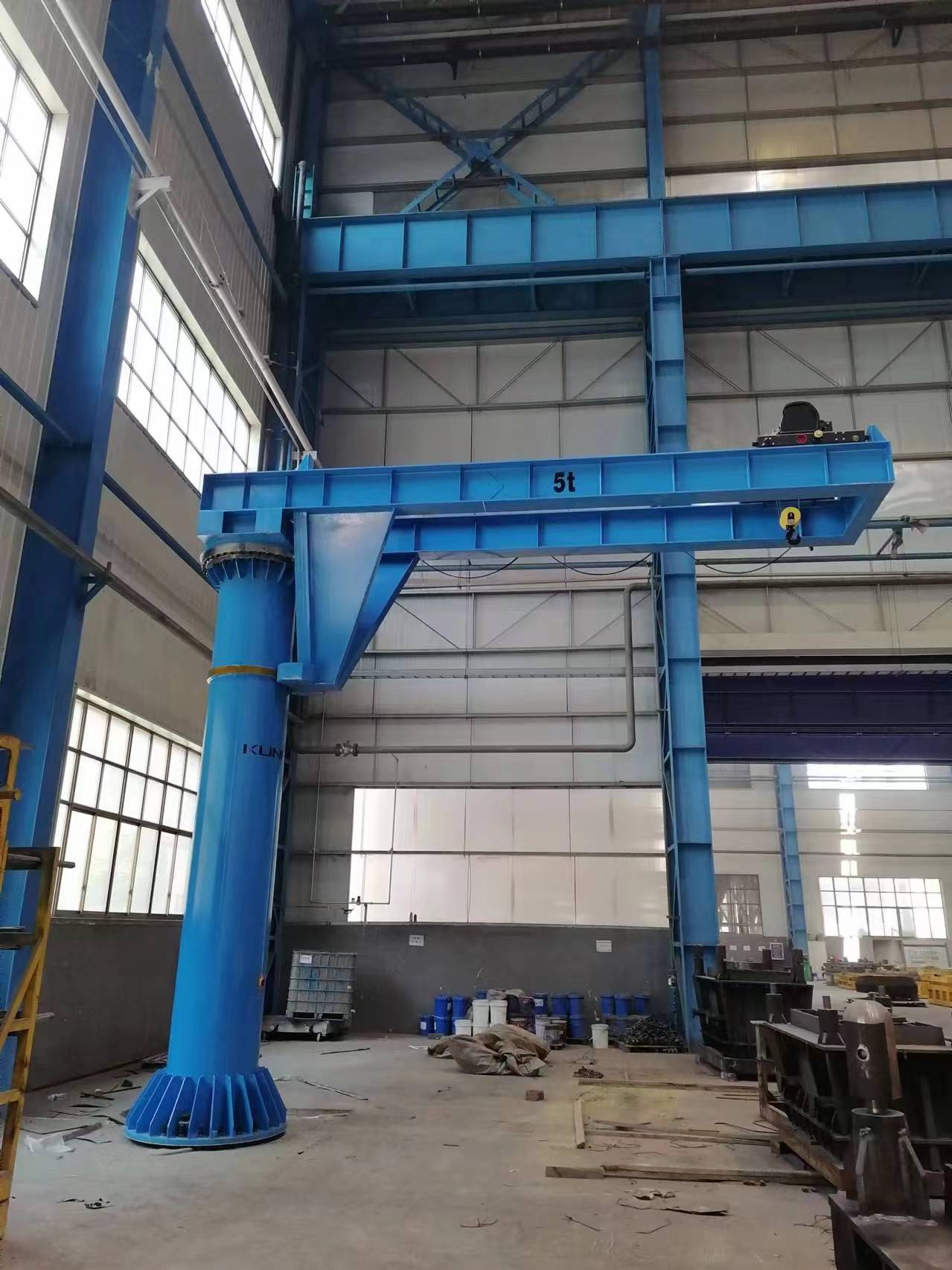
| Installation Requirements for Heavy Duty Electric Jib Crane
Heavy duty electric jib crane is a small and medium-sized lifting equipment developed in recent years. It has the characteristics of unique structure, safety, reliability, high efficiency, energy saving, time saving, labor saving and flexibility. It is widely used in production lines, assembly lines, assembly lines, and material lifting operations in warehouses, docks, laboratories and other modern industries such as machinery manufacturing, automobiles, and shipbuilding. It is an ideal lifting equipment for enterprises to improve work efficiency and improve working conditions.

Structure and composition
The heavy duty electric jib crane is mainly composed of a column, a swing arm, a jib swing drive device and a lifting mechanism (such as an electric hoist or winch). The base of the lower end of the column is fixed on the concrete foundation through anchor bolts. The motor drives the reducer drive device to rotate the cantilever. The hoist or winch performs reciprocating operations on the variable-section arm of the cantilever.
Operating characteristics
● It can be operated freely in three-dimensional space and is especially suitable for short-distance and intensive lifting situations.
● It has the characteristics of easy operation, small space occupation, and large operating range.
● Cranes of different specifications, lifting speeds and operating speeds can be selected according to the needs of the job.
● The rotation angle of the rotating arm can be selected according to the needs of the use site, such as 180°, 270°, 345°, 360° and other different angles.

Installation requirements
● The ground at the installation location must be flat and solid and can reliably bear the weight of the jib crane to avoid problems such as shaking or sinking in the future.
● Make sure there is enough space at the installation location for the jib crane to lift, rotate, and move forward and backward.
● Choose bolt fixing or pre-embedded fixing according to the actual situation. In either case, ensure that the base is firm and stable, which is the basis for the safe operation of the entire jib crane.
● If bolts are used for fixation, ensure that the number, specifications and burial depth of the anchor bolts meet the design requirements and are tightened in place.
● When connecting the power cord of the jib crane to the power socket, carefully check whether the connection is firm to avoid malfunctions or safety hazards caused by poor contact.
● After turning on the power switch, make sure the power supply is working properly to prepare for subsequent operations.
● Check whether the handle, button, hook, electric hoist and other components of the jib crane are installed correctly and ensure they are working properly.
● Before formal use, conduct a no-load test run to check whether the lifting, rotating, and forward and backward movements of the jib crane are flexible and accurate.
● During the lifting process, it is necessary to ensure that the connection between the hook and spreader and the lifted object is safe and reliable, and at the same time confirm that the weight of the lifted object is within the load-bearing range of the jib crane.








